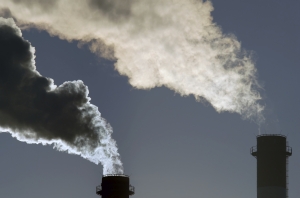MELBOURNE, January 10, 2023 – The government has today presented its detailed design proposal for the Safeguard Mechanism (PDF) emissions compliance framework, and proposed changes to the Safeguard Mechanism Rule.
To reach its 2030 target, the government will impose declining emissions limits on large industrial polluters under the Safeguard Mechanism, which covers around 215 of Australia’s largest emitting facilities across the metals, mining, oil and gas and manufacturing sectors.
In 2021-22, industrial emissions covered by the scheme represented around 28% of national emissions, making it Australia’s second largest emitting sector, behind electricity generation. While sectors such as electricity have begun to decarbonise, industrial emissions have increased, and will overtake the electricity sector as Australia’s largest emitting sector by the middle of the decade.
According to RepuTex, changes to the Safeguard Mechanism will now align industry emissions baselines with net-zero emissions by 2050.
“The setting of a transparent emissions trajectory for industry will provide a critical signal for companies to invest in on-site emissions reductions, or source domestic offsets, based on the least-cost combination of available opportunities” said Hugh Grossman, Managing Director of carbon market research firm, RepuTex.
“Critically, the new policy prioritises market integrity, both the demand-side and supply-side. We therefore anticipate that announced changes will translate into a robust and effective price signal to drive emissions reductions from the industrial sectors”
“In particular, the initial adoption of ‘site-specific’ baselines for covered facilities, flexibility for emissions intensive trade exposed (EITE) facilities – but no exemptions – and the design of an emissions reserve for new entrants, are all key structural measures to support a robust emissions market, while balancing compliance costs” he said.
Increase in offset demand to drive higher prices
According to RepuTex, the setting of robust emissions baselines will translate into an effective price signal for the Australian carbon market, supporting higher prices, and direct investment by industry in on-site emissions reductions.
“Following today’s announcement, we expect the Safeguard Mechanism reform to trigger a structural change in Australia’s carbon market by requiring companies to reduce emissions in line with a net-zero emissions trajectory” said Mr Grossman.
“The adoption of robust site-specific baselines will ensure that ‘total emissions’ align with ‘total baselines’ from day one of the scheme. This will remove all headroom from the current market, reduce oversupply risks, and create scarcity as baselines decline over time”.
“As demand builds, supportive conditions will have a positive impact on prices”.
“While we expect positive sentiment to drive an uplift in prices following today’s announcement, near-term prices will continue to be constrained by the surplus availability of ACCUs in the market following changes to the ERF made in March 2022 to allow project owners to exit their contracts and deliver future offsets to private buyers”.
According to RepuTex, the current supply glut may be fortuitous for industry, with compliance buyers expected to have access to a large pool of low-cost offsets.
“Industry now has access to a deep, plentiful pool of cost-effective domestic offsets, which should help to limit high prices in the early years of the scheme”.
“As facilities become more accountable to their declining emissions baselines over time, this pool of offsets will enable industry to reduce their emissions at least cost, while ensuring continued investment and co-benefits for the Australian carbon farming sector” he said.
Robust market will drive direct emissions reductions
According to RepuTex, while offsets will play a key role in support of industry’s early transition, direct investment in on-site reductions are likely to grow over time.
“Even where we see perfect policy design, decisions to invest in large-scale industrial emissions reduction projects have a long lead time”, said Mr Grossman.
“We are likely to see companies focus on low-cost process improvements and small equipment upgrades before they invest in capital intensive projects as prices rise, and policy certainty grows over the decade.”
“This should see strong demand for ACCU offsets before companies begin to invest in larger, more transformative on-site projects to reduce emissions, which will in-turn bring more supply of Safeguard Mechanism Credits to the market later”, said Mr Grossman.
“Combined with low-cost financing schemes like the National Reconstruction Fund, we will ultimately see a shift in investment from the purchase of offsets toward permanent, on-site emissions reductions as the price tag of low-carbon technologies matures”
“Critically, following the Chubb Review, we now view ACCU offsets as being fit for purpose. This means credits used under the Safeguard Mechanism – both ACCUs and Safeguard Mechanism Credits – will correspond to 1 tonne of emissions, which will be reflected via a robust and effective price signal” he said.
About RepuTex
RepuTex is Australia’s largest provider of price information, analysis and advisory services for the local carbon and electricity commodity markets. Established in 1999, the company has over 150 customers across Australia and Asia, among them the most active traders and market participants, including high emitting companies, large energy users, project developers, investment funds, physical traders, and policymakers.














